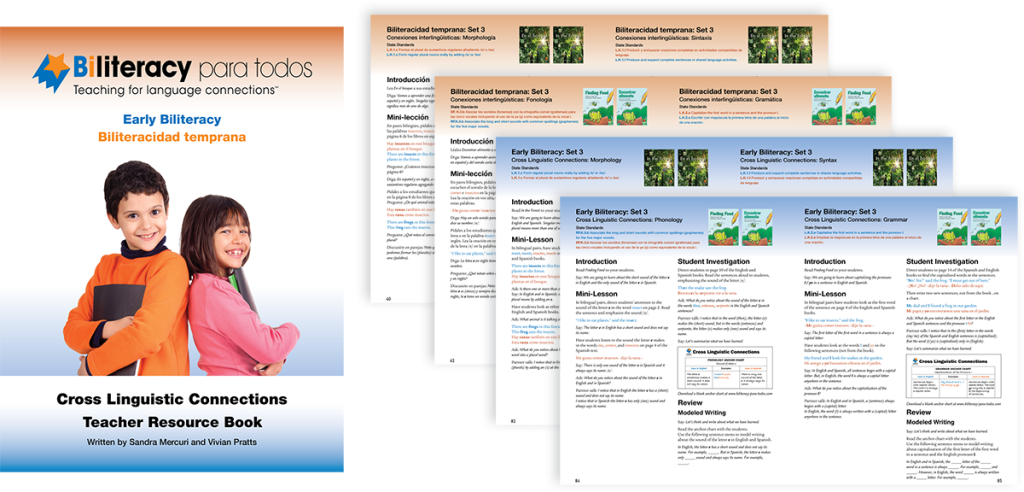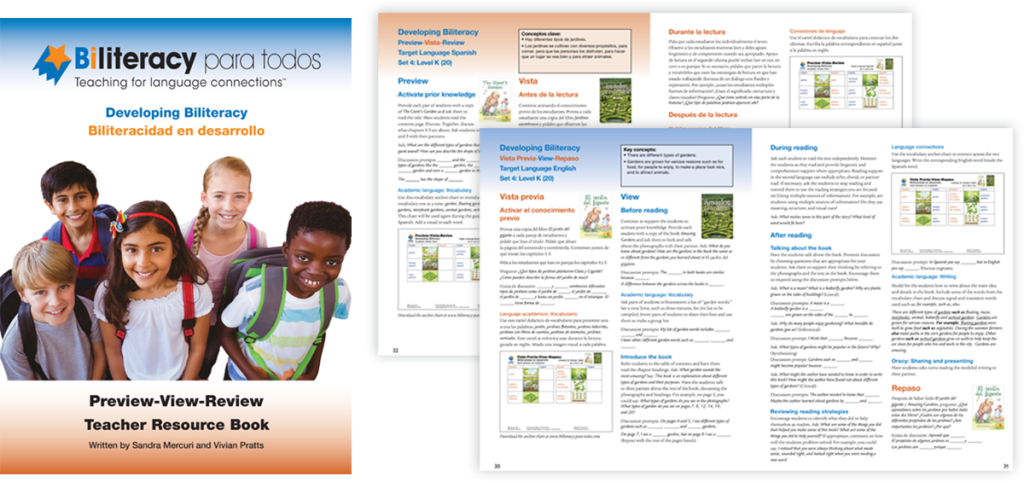Biliteracy para todos™
Biliteracy para todos™, your essential resource for dual-language learning, is a uniquely designed, standards-based program carefully crafted for Spanish-English instruction targeting language, content, and translanguaging practices.
Biliteracy para todos™ emerged from the authors’ experience working with bilingual teachers in various program contexts and builds upon three interrelated premises:
- Embrace students’ language practices and culture
- Connect the two languages of instruction
- Empower teachers and students through biliteracy practices.
Biliteracy para todos™ consists of two separate resources. These are available as standalone products or as one comprehensive package:
- Cross Linguistic Connections (CLC), for whole or small group instruction, encompasses phonology, morphology, grammar, and syntax.
- Preview-View-Review (PVR) provides instruction for small group reading in both languages.
Phenomenal achievement gains with Biliteracy para todos in Palm Beach County Schools

Cross Linguistic Connections (CLC)
Cross Linguistic Connections (CLC) is the pedagogy teachers use to guide students in noticing similarities and differences in English and Spanish phonology, morphology, grammar, and syntax as they talk about each language side by side. All students have the opportunity to develop metalinguistic awareness and, ultimately, to develop biliteracy. Teachers who create these opportunities allow bilingual learners to connect, access, and apply concepts and skills from English to Spanish, and from Spanish to English.

Cross Linguistic Connections mini-lessons use the same text in English and Spanish to engage students and support them as they notice and analyze similarities and differences across the two languages.

Preview-View-Review (PVR)
Preview-View-Review is a three-step bilingual strategy that accesses the students’ home language, activates background knowledge, and develops vocabulary before engaging in reading in the other language. PVR builds on the literacy skills and conceptual knowledge emergent and experienced bilinguals have developed in the home language. PVR uses paired texts in English and Spanish to support the students’ reading and language development in small group settings. Each PVR lesson draws on one language to build background knowledge and vocabulary before engaging in new topics or reading the connected text in the other language. Connecting the languages of instruction through the PVR structure supports students’ biliteracy development during small group instruction.